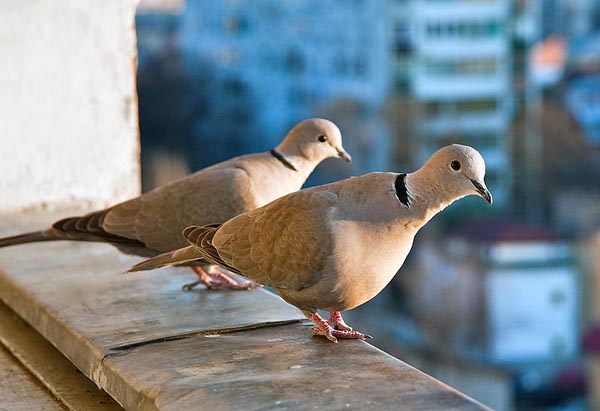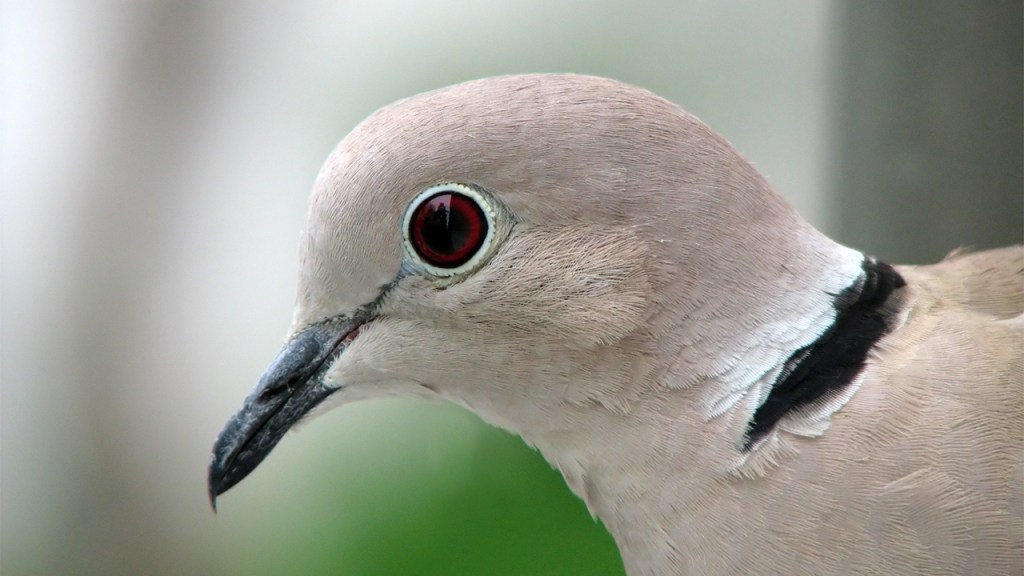The Great Backyard Bird Count (GBBC) — one of the largest citizen science initiatives in the world – annually documents a wide variety of bird population trends.
To my mind, one of the most interesting has been the dramatic spread of the non-native Eurasian collared dove across North America.
The GBBC asks citizen birders to watch an area for at least twenty minutes sometime during a four-day period in mid-February (this year’s count concluded yesterday), and record the birds they see.
Just ten years ago, seeing a Eurasian collared dove would have been a novelty. No more: the doves are now commonly reported by birders in most of the United States.
GBBC data tell the story of this rapid spread.
In the 1970s, the Eurasian collared dove was introduced to the Bahamas. By the early 1980s, the non-native birds made their way to South Florida, where they established populations. Then they began spreading north and west.
Their range appears to have expanded slowly at first. A look at GBBC reports from 1998 show a lot of sightings in Florida, with some birds reported in Texas, Alabama and Arkansas.
By 2001, the doves reached California.
Last year’s bird count results showed the Eurasian collared dove had colonized much of the country. It has not (yet) been reported in New England, but it has reached as far north as Alaska.
The GBBC’s video map dramatically illustrates this expansion.
In my state of Idaho, the doves were first recorded in 2005 by two backyard birders. In subsequent years, the bird was commonly reported in Idaho’s eastern corners. Last year, 132 GBBC participants reported 719 doves throughout the state.
I saw my first Eurasian collared dove in our backyard in 2008 – a banded bird that may have been an escaped pet. Last year, I began seeing the doves hanging around our neighborhood. This year was the first that I noted the species during my own participation in the Great Backyard Bird Count.
What’s going on here? Should conservationists be concerned about this spread?
Unlike some dove species, Eurasian collared doves aren’t migratory. However, they do readily expand into new suitable habitat. In fact, in their native Asia, Eurasian collared doves have been rapidly expanding their range as well – colonizing new countries every year.
The dove is one of those species that adapts well to humanity. The trees, power lines and bird feeders of suburbia provide perfect habitat. The Eurasian collared dove is almost always seen near homes and farms, not unbroken forest or prairie.
Research indicates it is not adversely affecting native mourning doves or other birds. It may simply be filling a new habitat niche created by suburban habitat. But it is still early in the spread.
Could Eurasian collared doves become an invasive threat? That remains to be seen.
Citizen science projects like the GBBC and another citizen initiative, Project FeederWatch, will help scientists continue to track the spread and impacts of the species. It will be interesting to learn what this year’s count found about Eurasian collared doves. If past years are any indication, their populations will likely have grown and spread into new areas of the country.
Have you seen Eurasian collared doves in your area? Have you noted other trends during your backyard bird counts? Let us know what you’re seeing!





I took a Pic today of an all white Dove with a Grey mate. It does have a ring around it’s neck. I got 3 photos of it.
St Francis, KS. nw corner of KS.
Give me an email adds and I’ll send the 3 pics I got.
J.
H beach ca. We saw our first pair July first 2017. Beautiful !! Was eating with all the other doves and birds NO PROBLEM.
I saw one this morning on my property in Ahwahnee, CA. However, the beak was golden brown with a black tip rather than the black.
We’ve had 4 of these at our feeder here in Iowa and knew they were different from our other pair of doves. Glad to find your info regarding them.
I believe I have one in my neighborhood… I’m not a birder but I snapped a (poor) pic before It flew off can I send it to you? Perhaps you could confirm one way or another. I live in Vancouver, BC. I thought it was a mourning dove, but the stripe on the back of the neck makes me doubt that.
Jim McDougall
Hi Jim, Given the ring on the back of the neck, it does sound like a Eurasian Collared Dove. I recommend submitting the photo to iNaturalist for confirmation, iNaturalist users work together to reach consensus on identifications. Often the images are also used in citizen science projects. Thank you!
Been hearing the call for a couple of weeks now. Seen the pair ofeurasian collared dovestoday june242017 in surrey bc
There were 15 of these beautiful birds sitting on a hydro wire in our neighbours’ garden, recently. They constantly make their compelling call and sit in the other neighbour’s evergreen tree.
We’re in North Vancouver, BC, Canada.
Yes, over the last five years in our village I have seen this elegant and shy bird enjoy bring on a new clutch of young. Two have appeared in the garden today.
I see these birds every day. They come for the bird seed that I put out, both on the ground (in a feeder) and in a planter box I have hanging outside my window. I usually get up to 10 doves at a time twice a day. It’s funny to watch them trying to fit into the planter box at the same time. I live in Hayward (the East Bay) California. When I lived in Castro Valley, CA (the East Bay, also) they would congregate, too. I love watching them. The most I had was 15 in Castro Valley.
We live in Bon Accord , Alberta and have four Eurasian collared doves in our neighborhood. This is the first year we have seen any and have lived here for over thirty years.
They are back…had a pair on our deck today.
I noticed my first yesterday in my area of San Diego County, it was mating in a tree and, at first, assuming it was a mourning dove, was mesmerized by its size. Then I noticed the black ring on the neck and looked it up today. This is the first one I’ve noticed nesting in this area.
A few Eurasian Collared Doves have moved into our area a couple years ago. They stay year round. Four miles south of Valley Springs, California. Located at Baldwin & Highway 26. Have photos if needed.
Three collared doves landed on my back deck today, Sunday June 4, 2017, 2mi. east of Belle Fourche, SD. Never have seen them here before.
I live in Spokane, WA.
I have two of them living around my back yard starting early this spring. This is the first year I have seen one, I assume they are a mating pair.
I had to research to figure what they were.
Two collared doves seen in Coeur d’Alene, ID during summer of 2016; group of 6 seen that September in same neighborhood. This year, one or two at a time at our frog pond or beneath the bird feeder every day through May.